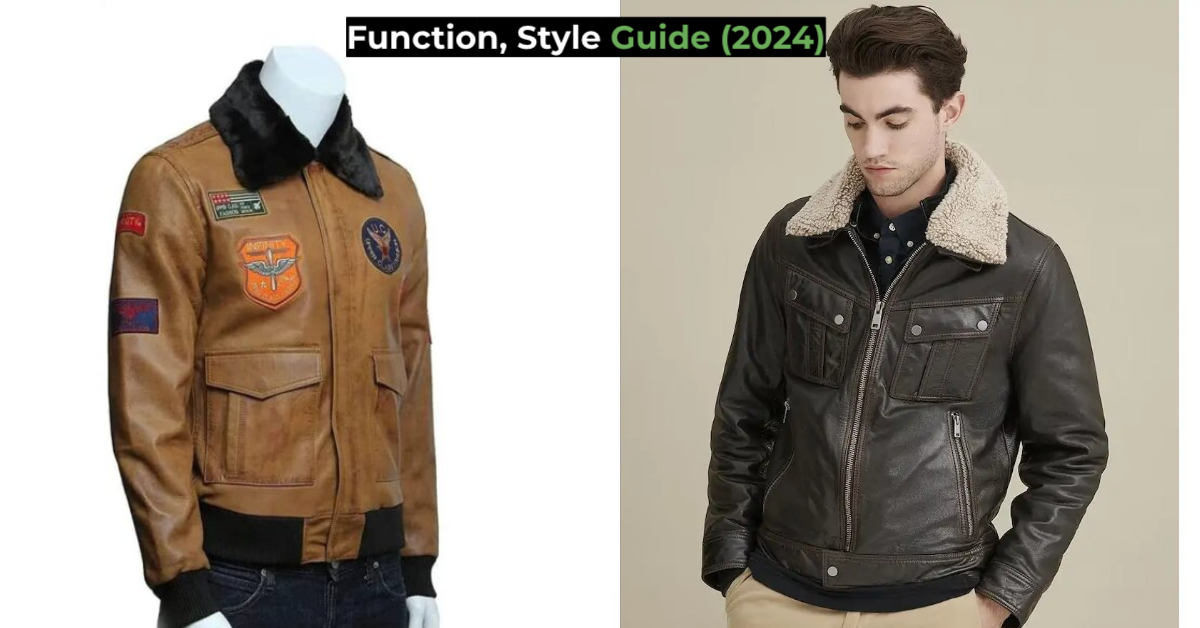
Blog
Men’s & Women’s Jackets: Function, Style Guide (2024)

What Is a Jacket?
A jacket is a garment worn over other clothes for fashion or warmth in cold climates. Materials used for jackets vary and include: cotton, wool, and leather among others and each of them contributes to the jacket's insulation and appearance. More often than not they do not even go past the waist area and there is a wide variety of them for the two markets, menswear and womenswear.
Key Elements of a Jacket Explained:
- Shell: The outer layer of the jacket, which can be found in various colors and materials. It may be waterproof or water-resistant, protecting the elements.
- Lining: The inner material beneath the outer shell, shaping the garment and holding together any added filling for warmth and comfort.
- Filling: The insulation material between the shell and the lining, often made of down feathers or synthetic down, provides essential warmth.
- Pockets: Functional elements added to certain styles of jackets, located on the chest, front, or inside, offering practicality and style.
- Hood: An attached head covering on the back of the collar of some jacket styles, offering additional protection against the weather.
Differences between a Jacket and a Coat:
- Length: Jackets typically end at the waist or hip, such as bomber jackets or denim jackets, while coats extend to the mid-thigh or below the knee, like trench coats or parkas.
- Weight: Jackets weigh less and are suitable for layering, while coats are heavier and designed to keep you warm in colder weather.
- Utility: Jackets are popular for vigorous activities due to their shorter length and lighter weight. Coats, with their longer length and heavier weight, are ideal for casual or formal winter wear but less practical for physical activities.
Popular Materials for Jackets:
- Cotton: A natural fiber that is soft, insulating, and can be dyed in many colors. Cotton is not waterproof and offers limited wind protection.
- Leather: Made from tanned animal hides, leather is durable and stylish but not naturally waterproof. Faux leather is an alternative that is waterproof.
- Wool: Warm and heavy, wool is perfect for winter jackets. Wool blends combine wool with synthetic materials for added softness and flexibility.
- Cashmere: A high-quality type of wool from specific goat breeds, stronger, softer, and more insulating than standard wool.
- Fleece: A synthetic fabric made from polyester fibers, fleece is soft, insulating, and breathable, making it a popular choice for winter wear.
- Shearling: Processed sheepskin with the wool left on, offering breathability and flexibility. Synthetic shearling blends add warmth and softness.
- Polyester: A plastic-based material that is light, and water-resistant, but not the best insulator. Commonly used in windbreakers.
Different Styles and Types of Jackets for Various Occasions:
Rain jackets shield against rain and snow, crafted from waterproof materials. They often feature lightweight construction, and sealed seams, and may include hoods and adjustable cuffs for added protection.
Bomber Jacket: This casual jacket features a ribbed waistband and arm cuffs, a zip-up front, and multiple pockets. Originally designed for pilots, it’s now a fashion staple.
Blouson Jacket: Similar to a bomber jacket, the Blouson jacket has a classic fold-down collar instead of a ribbed one. It offers a stylish, slightly loose fit with elastic at the waist and cuffs.
Varsity Jacket: Also known as letterman jackets, these feature different colored sleeves and patches. They originated in high school sports but are now fashionable for everyday wear.
Harrington: A lightweight jacket with a zippered front, cinched waist, and high collar. The Harrington is similar in style to a bomber jacket but with a more refined look.
Denim Jacket: Made from sturdy denim, these jackets are typically dyed blue, black, or grey. They are casual and versatile, often layered over T-shirts or sweaters.
Leather Jacket: Crafted from natural or faux leather, these jackets have a zip-up front and a stand collar. Popularized during WWII, they are stylish and durable.
Motorcycle Jacket: Designed with heavy materials, high collars, and thick layers for protection. Motorcycle jackets prioritize safety in case of road accidents while exuding a rugged style.
Double-Breasted Jacket: A formal jacket with wide front lapels that overlap and two columns of buttons. It provides a sophisticated and structured look, suitable for formal occasions.
Suit Jacket: A component of formal attire, suit jackets come in solid colors with minimal ornamentation. To achieve a polished appearance, people commonly pair them with matching trousers.
Tuxedo: Similar to a suit jacket but with satin details on the lapels, buttons, and pant legs. Tuxedos are worn at black-tie events and formal occasions.
Blazer: A versatile jacket with a looser cut than a suit jacket. Blazers frequently feature stylized buttons and are versatile for dressing up or down, making them suitable for both casual and semi-formal outfits.
Peacoat: A popular man’s winter garment consisting of a fabric made of wool and with two rows of buttons and large collars. Peacoats allow for wearing warm clothes and at the same time look like a timeless fashion piece.
Puffer Jacket: Puffer jackets are fitted and padded with down or synthetic filling, offering warmth to the wearer. They are primarily designed for winter wear, serving as insulated clothing.
Anorak: A hooded, heavy jacket with insulation for very cold temperatures. Often a pullover style, anoraks provide excellent protection against harsh weather.
Windbreaker: The Windbreaker is a fashionably thin garment designed to protect the wearer from serious gusts of wind or light showers. It collapses easily and offers great convenience for carrying in a bag.
Field Jacket: Originally used in the military, field jackets are lightweight and weather-repellant. They feature four front pockets and are practical for outdoor activities.
Chore Jacket: The Chore Jacket is constructed from fabrics such as denim or twill, designed to be rugged. They are perfect for work wear and for other, semi-casual more or less rough clothing.
